As you may know from reading some of my other Meat Mentor blog posts, I have a hard time pass on loss-leader pork shoulder butt sales. A large supermarket chain ran butts in their local ad here this week for 99 cents a pound; making me motivated to try and produce something new. Our freezer is already well stocked with my normal further processed pork items; so I had to think outside the icebox.
A short while back, while producing Polish sausage, I ran out of casings and ended up making a precooked loaf out of the remainder of that batch. To my surprise, that loaf turned out to be extremely good eating and some of the people that tried it (including myself) liked it a little better than my cased Polish. Plus, loaves are less expense and less work than making cased sausage. So, I decided to make an sausage loaf or two. We are not big lunchmeat sandwich eaters; these loaves are intended for cutting into thick uncured dinner slices.
The retail-trim butts offered at the supermarket for 99 cents per pound were far too lean to make good eating sausage. Not wanting to go through the effort and expense of trying to find a little high quality pork fat, I searched for another way to successfully make loaves. Loaves that would not turn out dry and rubbery. My normal way of getting fatter butts is to pay about $1.79 a pound for boneless butts at a Food Service supply establishment. But, the 99 cents a pound lean butts strongly appealed to my frugal nature. I decided to add 8%, of the combined pork fat and lean weight, as raw cabbage. The cabbage is intended to make the cooked lean sausage loaf slices less rubbery and more juicy.
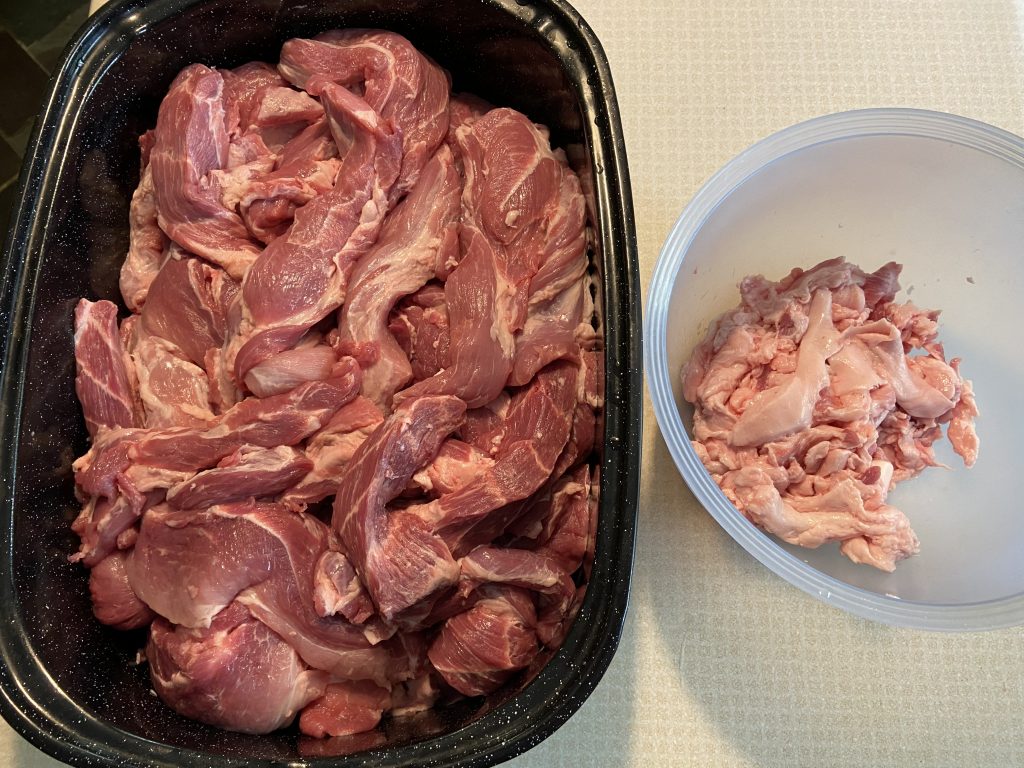
After boning, the price per pound of the combined fat and lean pork components worked out to be just $1.06. As can easily be seen here, this is a low-fat (healthy) sausage batch. Batch formulation was: 17.97 pounds of pork lean & fat, 1 1/2 pounds of raw cabbage, 1 1/4 TBSP of sausage sodium phosphate, 5 1/4 TBSP of leaf marjoram, 2 1/8 TBSP of black pepper (half fine ground and half coarse ground), 10 crushed gloves of garlic, 1 1/2 cups of chilled pork broth, and 5 2/3 TBSP salt.
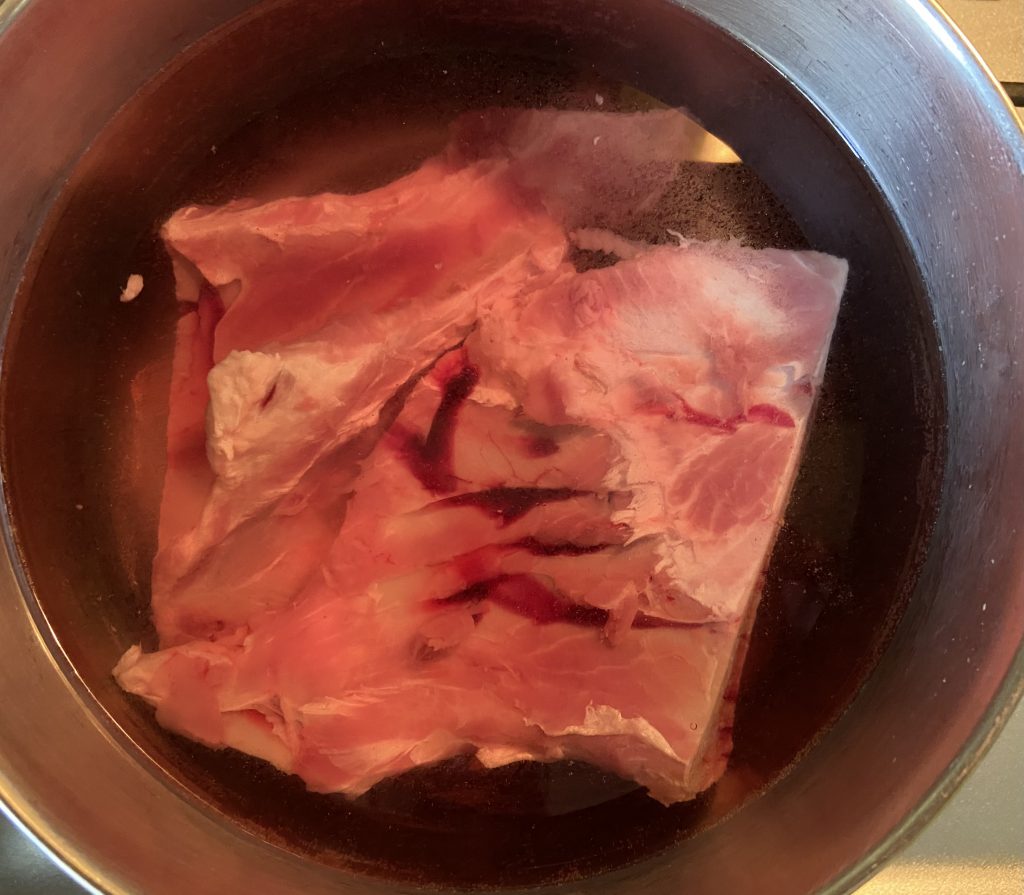
Blade bones were boiled in water and some of the broth that was used to pasteurize the spice blend (not including salt or sodium phosphate); by way of boiling. Salt was then stirred in to complete the seasoning mixture. I also used a little of the broth in a sauerkraut, mushroom and shredded beef dish. My wife had no interest in the remaining pork bone-broth, so it was dumped. Conclusion: boiling the blade bones is not worthwhile. Just use water for batch moisture.
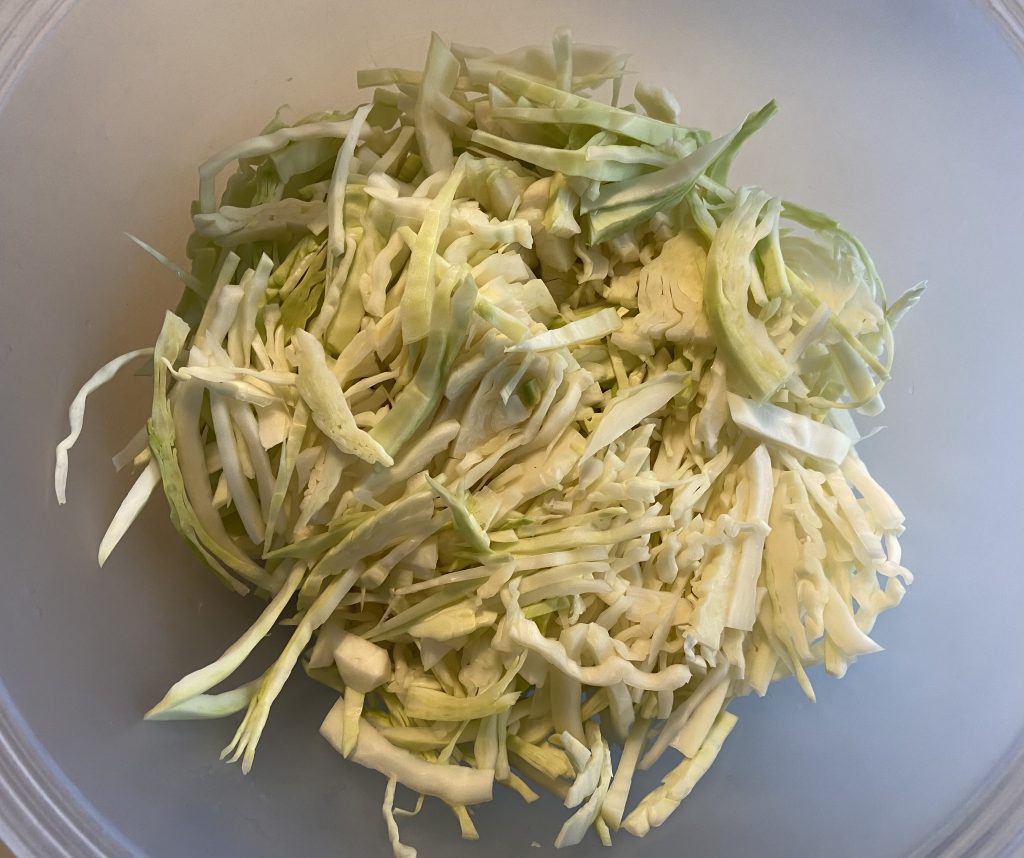
While the pork lean, fat and the seasoning blend were all chilling out well, the cabbage was sliced as it would be for making coleslaw.
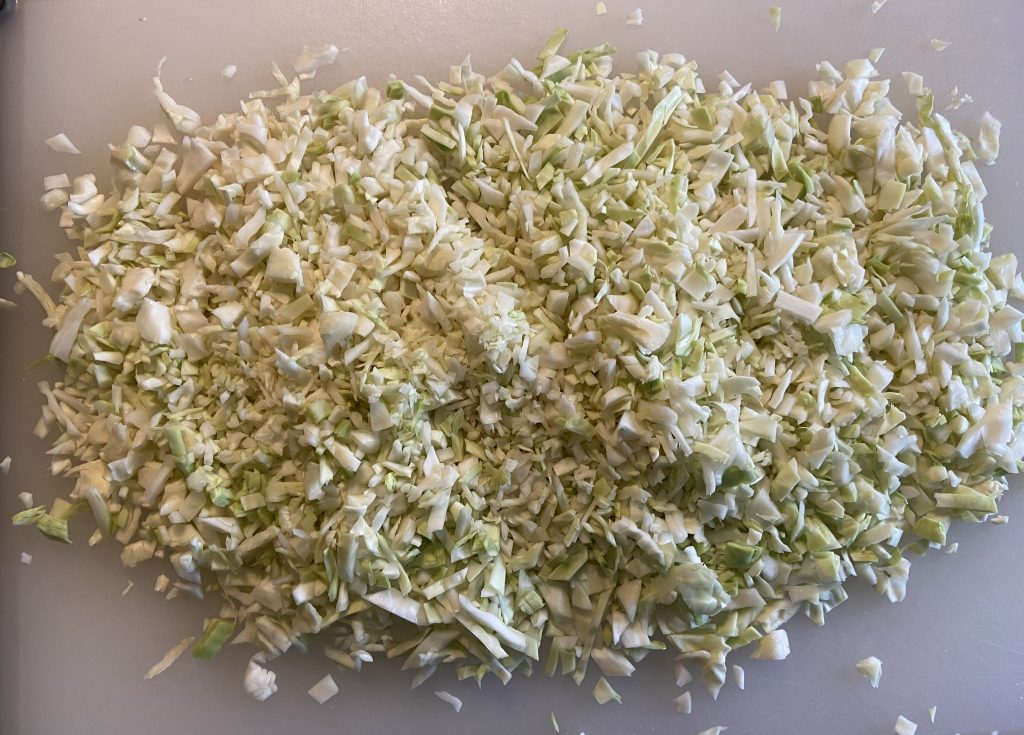
Cabbage was then fine diced and placed in the bowl that already contained pork fat. That bowl was returned to refrigeration to get good and cold (but not frozen) overnight.
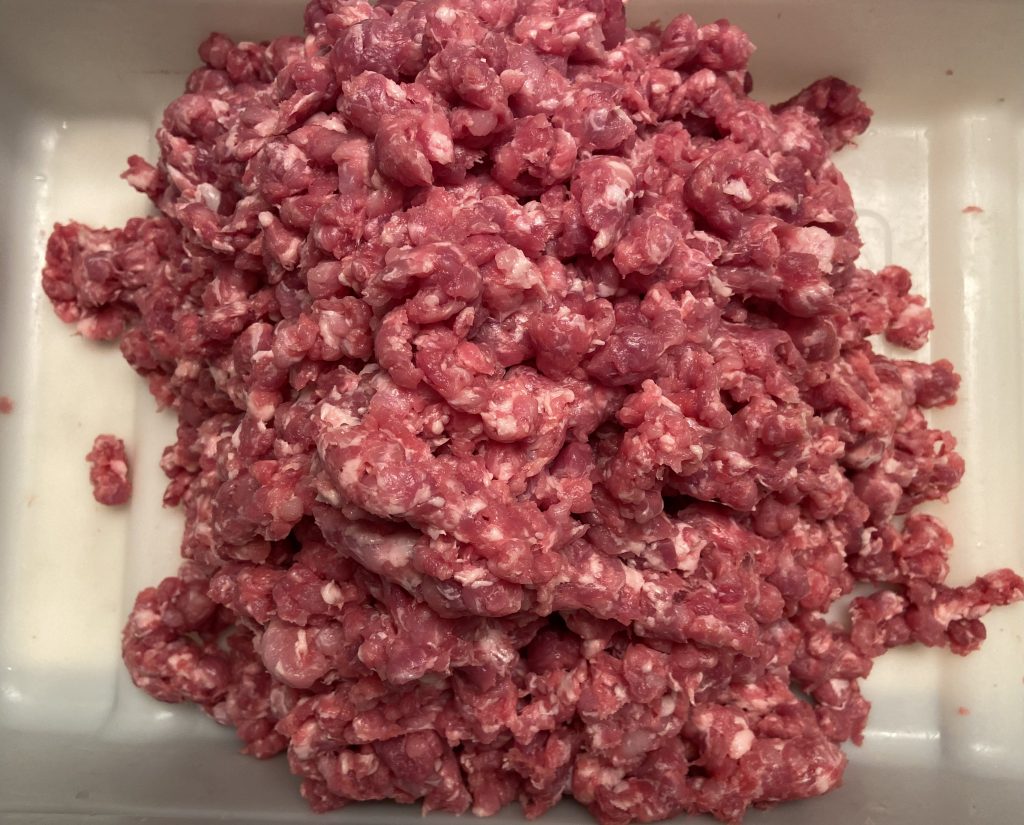
Early the next morning the lean pork was sent twice through the 3/4 inch hole-size grinder plate. Normally when I make Fresh Polish sausage, only half the lean goes through the 3/4 inch plate a second time. In this uncased product case I wanted all the lean to be a little finer chopped to enhance salt-soluble protein extraction for binding and to help reduce the amount of air-pockets in the finished loaves.
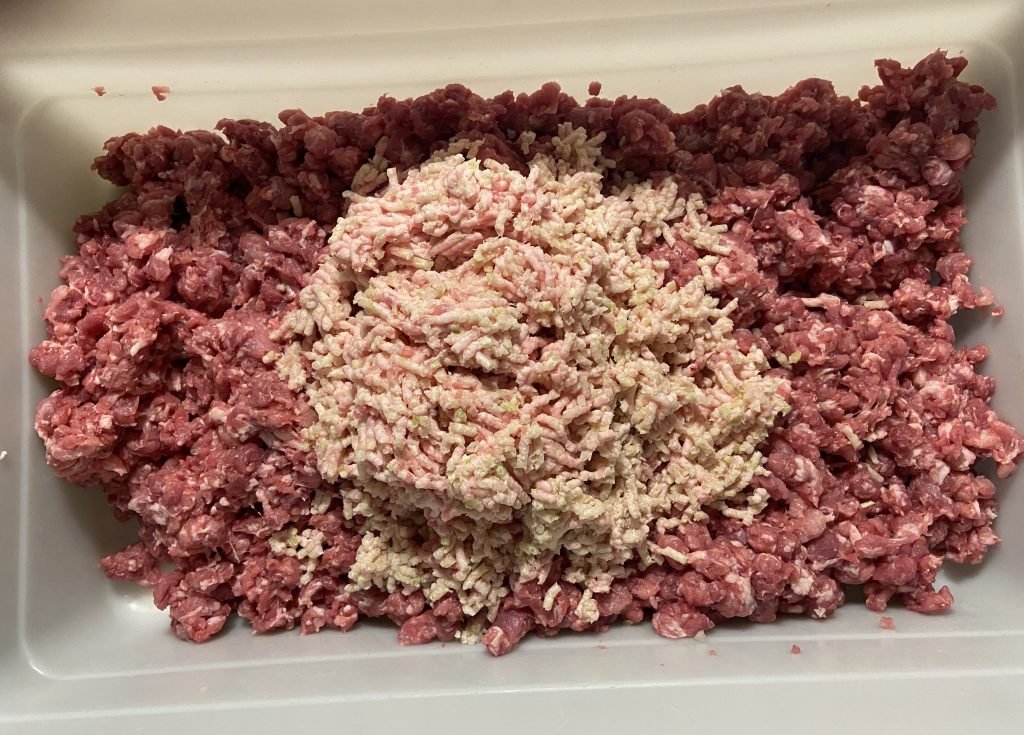
Lastly, pork fat and chopped cabbage went one time through a 3/16 inch grinder plate. Two slices of frozen bread chased the fat & cabbage in an effort to push most of the sausage making materials out of the grinder head. The sodium phosphate was then dissolved in a little water and lightly mixed in with the pork and cabbage. It’s a GMP (Good Manufacturing Practice) to mix the sodium phosphate into a meat batch ahead of salt.
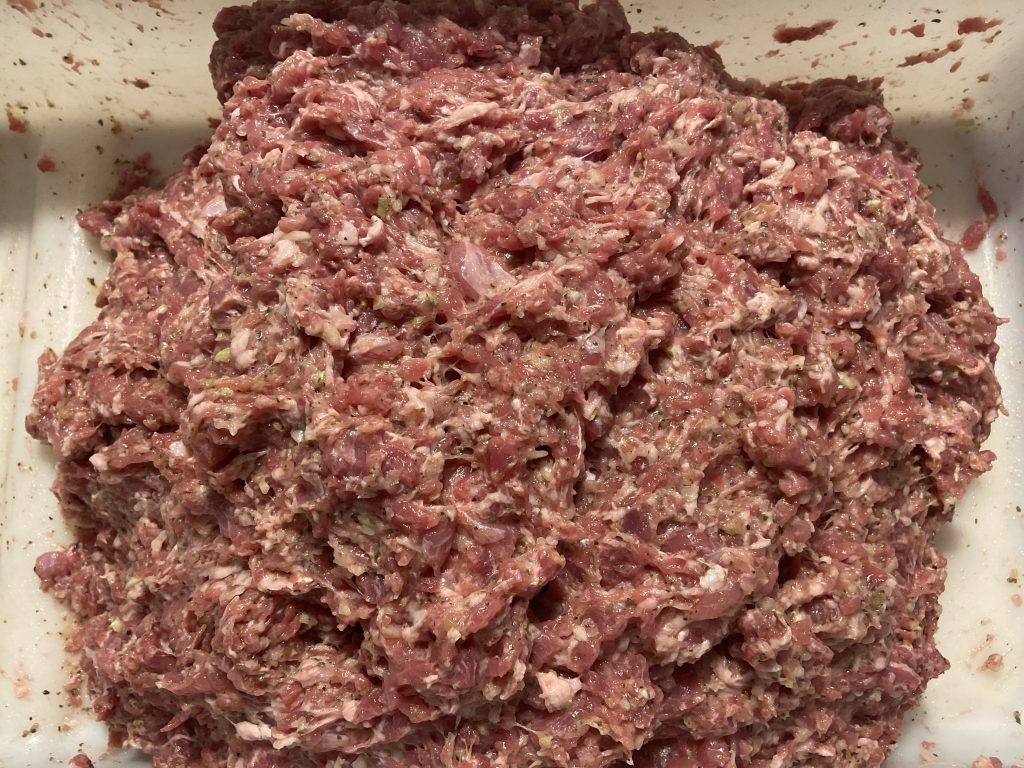
The seasoning blend was added and the completed batch was mixed a fairly long time to thoroughly distribute everything and to the increase salt-soluble protein extraction needed to assure tightly bound loaves. Besides inhibiting fat oxidation and increasing cooked product moisture retention, sodium phosphate also helps increase cooked meat bind. Mix until the batch becomes moderately sticky and has a slightly shiny appearance.
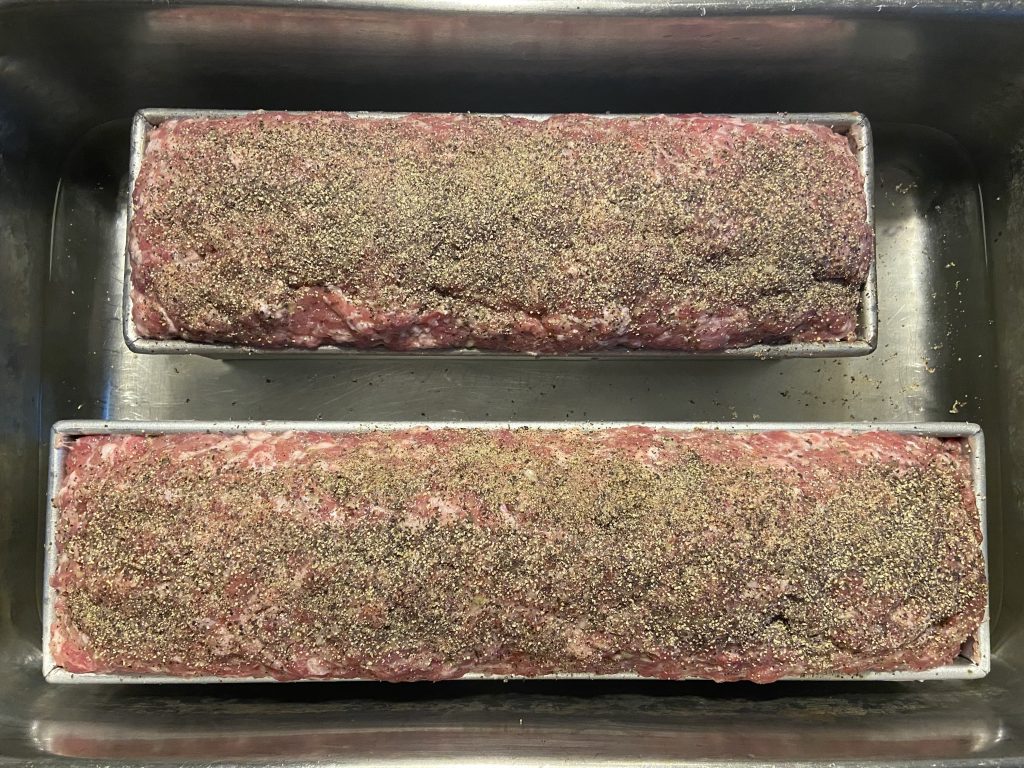
Tightly pat the sausage into the pans in layers (lifts). A crust containing both coarse and fine ground black pepper was sprinkled on just before cooking. About an inch of water was poured in the bottom of a large steam-table pan, to help with steam generation throughout the long oven cook.
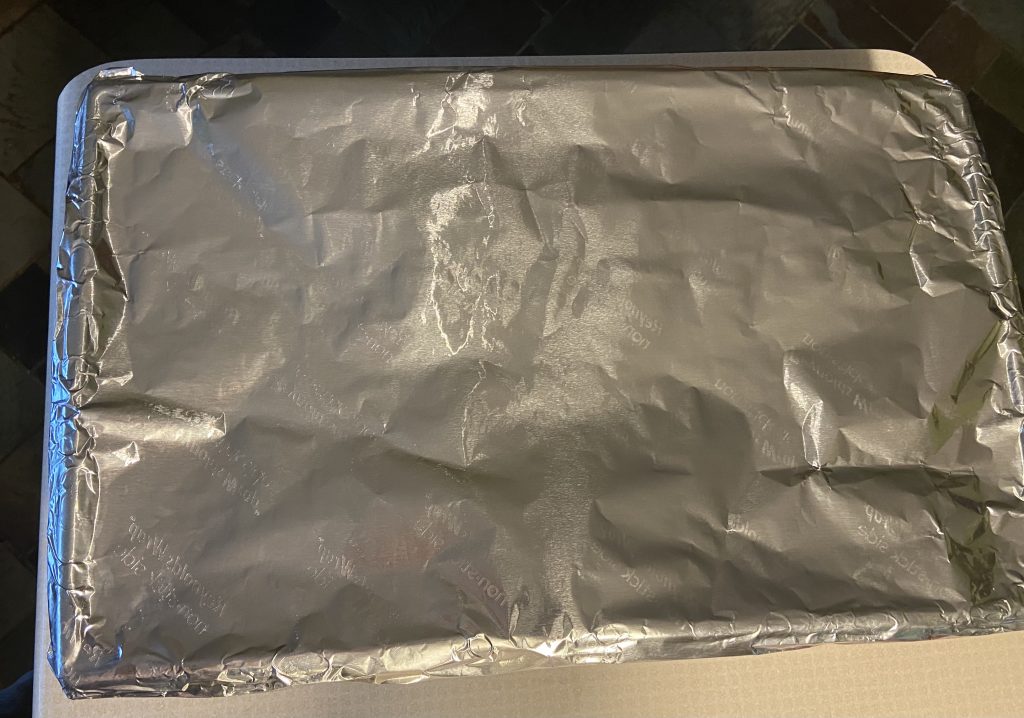
A single sheet of wide-roll aluminum foil was used to seal the large steam table pan. That steam table pan, containing the loaves, went into a 275F for 4 hours before internal product temperature was checked for the first time.
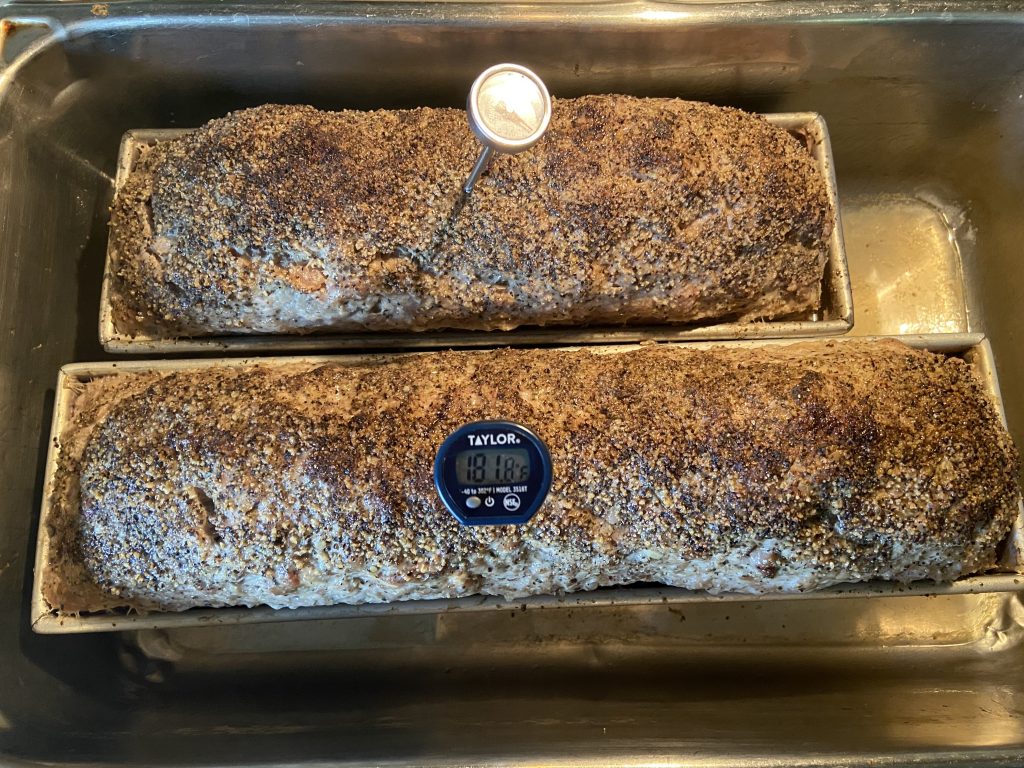
The smaller Pullman loaf pan was at 156F, in the center, after 4 hours; the 13 inch long loaf was not temperature checked at that time. Both loaves were pulled from the oven after 5 hours of total cooking time. After being pulled from the oven the longer of the 2 loaves topped-out at 186F internal in about 10 minutes and the smaller loaf went to 191F. I was aiming for about 180F internal to assure that the coarse ground pork shoulder lean cooked tender.
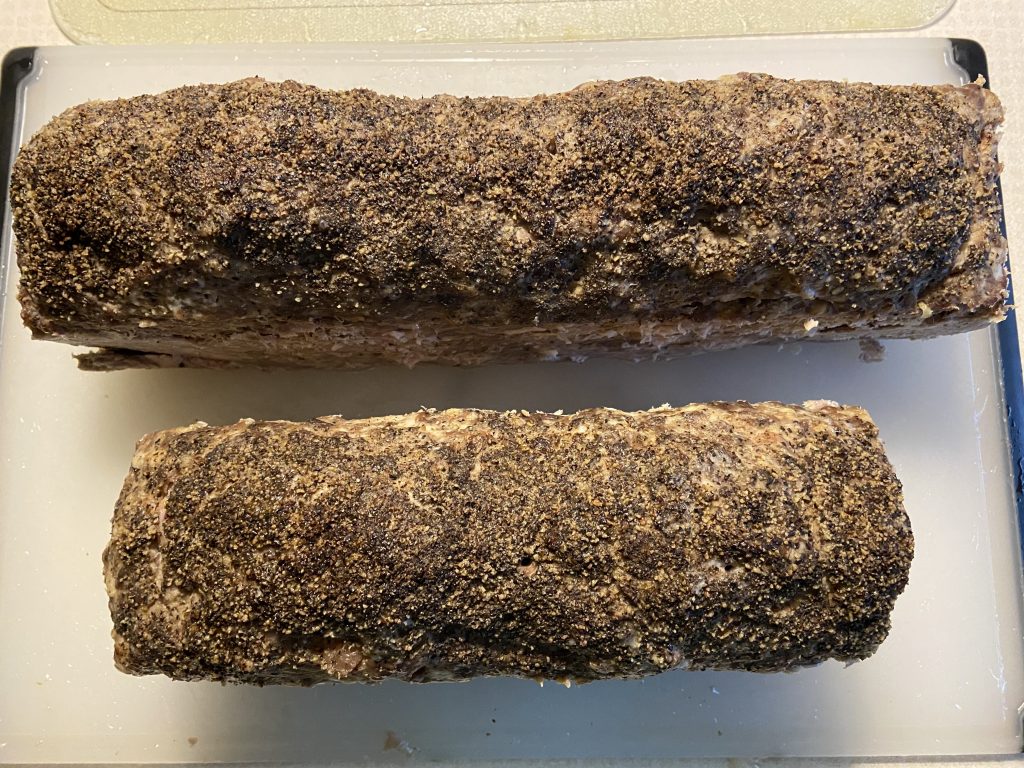
Well chilled loaves removed from pans.
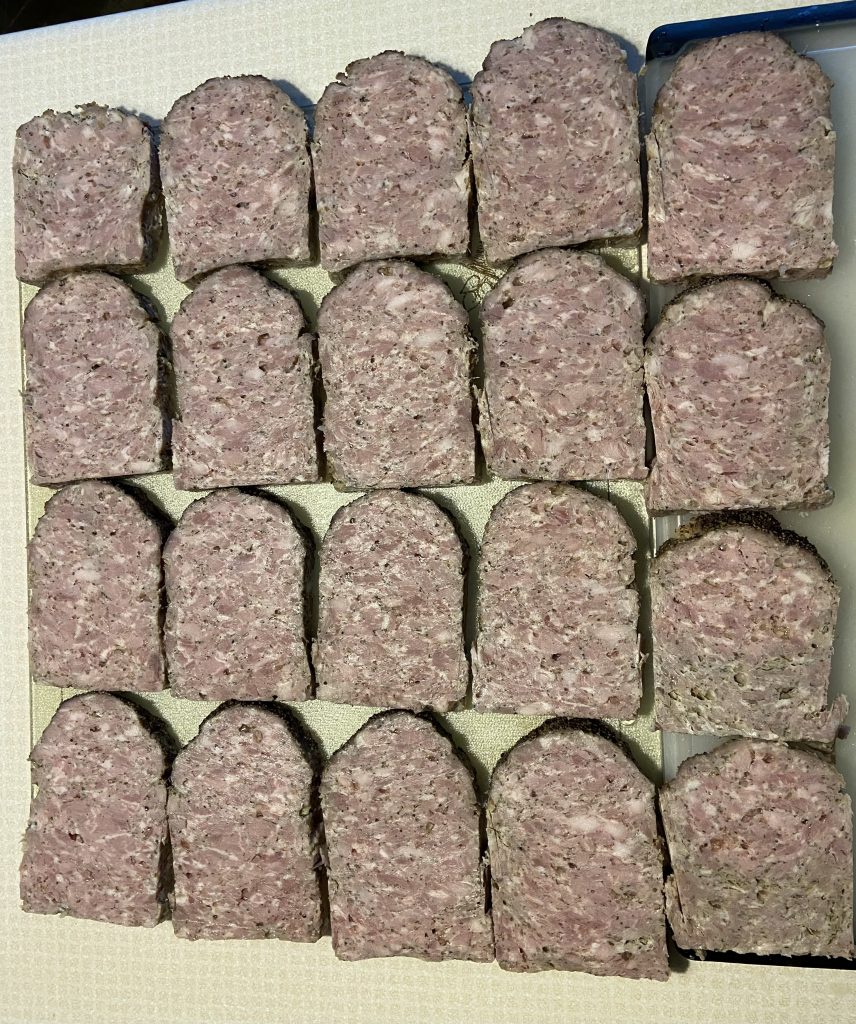
All the thick cut slices from the longer loaf.
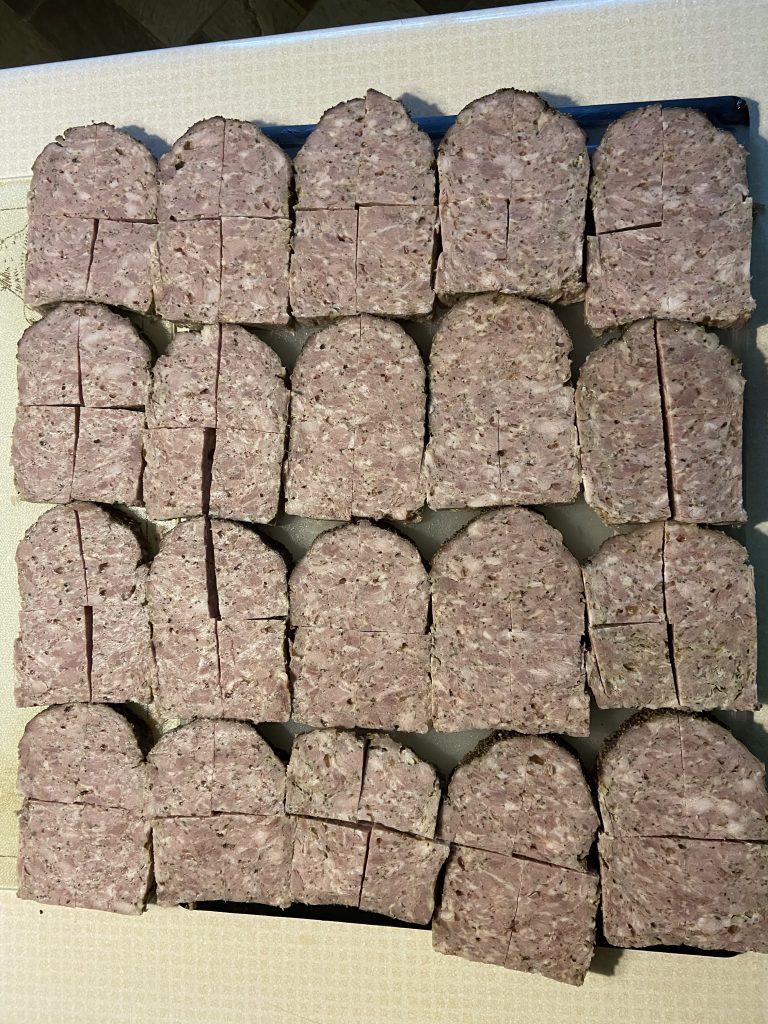
Loaf slices quartered for convenient microwave reheating.

The larger of the 2 loaves packaged 8 pieces per sandwich size bag; with 2 layers of wax paper between the layers. 4 sandwich bags were squeezed into gallon size bags to complete a double wrap.
This is a very delicious and low-fat convenience item that cost under $2 per pound to make. Sure, I’ll pay 5 to 6 times that amount for commercially produced science experiments that are increasingly masquerading as meat. Not. No one will take care of your business like you can.
